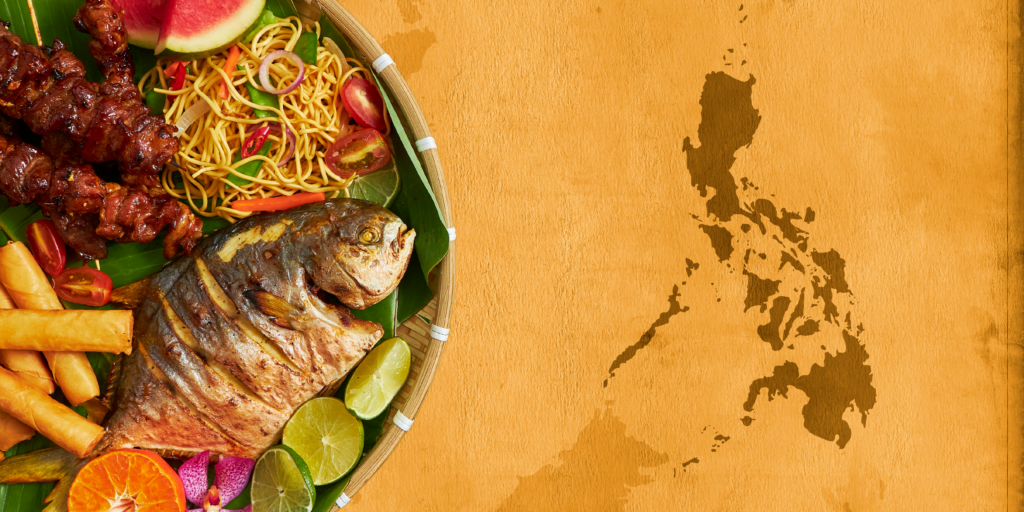Do you believe our traditional dishes are “unhealthy”? If so, you’re not alone - but that belief might be influenced by our colonial mentality. Colonial mentality is a legacy of centuries of colonization by Spain, the United States, and others. Over time, we’ve unconsciously learned to favor anything foreign and undervalue what’s local. This mindset …

Do you believe our traditional dishes are “unhealthy”?
If so, you’re not alone – but that belief might be influenced by our colonial mentality.
Colonial mentality is a legacy of centuries of colonization by Spain, the United States, and others. Over time, we’ve unconsciously learned to favor anything foreign and undervalue what’s local. This mindset has shaped how many of us see the food we grew up with.
It’s not just about food, but the way it affects what we eat and how we think about health is undeniable.
This plays out in several ways when it comes to food:
We Often Prefer Imported Foods
Be honest – how many times have you thought that imported foods are “better” or “healthier”? Quinoa and kale get marketed as must-have superfoods, while local options like kangkong, kamote, and saba sit on the sidelines, despite being just as nutritious (if not more).
We Label Traditional Dishes as Unhealthy
Lechon, sisig, adobo – these beloved dishes often get dismissed as “unhealthy” because they’re rich in flavor or fat. But this narrative ignores the diversity of Filipino cuisine. For every indulgent dish, we also have nutrient-packed options like pinakbet, sinigang, or laing.
We Chase After Western Diet Trends
Think about it: keto, paleo, Mediterranean – these diets get all the hype, while our traditional eating habits, like pairing rice with vegetables and fish, get criticized for being “too carb-heavy.” The irony? Those trendy diets often don’t consider what’s culturally sustainable for us.
The Reality: Filipino Food Isn’t the Problem
Our food isn’t inherently unhealthy.
What’s unhealthy is how it’s misunderstood and misrepresented.
When prepared thoughtfully, Filipino dishes are perfectly aligned with balanced nutrition.
Let me break it down:
Our Traditional Diet Is Balanced
Sinigang and tinola are great examples of meals with lean proteins and vegetables. Pairing rice with viands ensures you’re getting carbs, protein, and fiber in one plate. And let’s not forget tropical fruits like mango and papaya, which are nutrient powerhouses.
Cooking Methods, Not Culture, Matter Most
It’s not the dishes themselves that cause problems – it’s how we prepare them. Deep-frying everything or using too much salt and oil are modern habits, not essential to Filipino cooking.
Local Foods Rival Imported Superfoods
Malunggay leaves? Packed with calcium. Kamote? A complex carb that provides lasting energy. These local staples often match or surpass the nutritional value of expensive, imported alternatives.
How We Can Reclaim and Celebrate Filipino Food
If you’ve been caught in the mindset that Filipino food is “bad” for you, here’s how we can start shifting that belief:
Keep Learning
Understand that colonial mentality has shaped these biases. Filipino food has stood the test of time because it’s diverse, delicious, and adaptable.
Modernize Without Losing What Matters
You don’t need to overhaul your meals – just tweak them. Grill instead of fry, use less salt and oil, and add more vegetables to your plate. Small changes can make a big difference.
Support and Celebrate Local Ingredients
Choosing local produce isn’t just good for you; it supports Filipino farmers and reduces our dependence on imported goods. Sitaw, Saba, and Santol deserve a place on your plate just as much as kale or chia seeds.
Let’s Change the Narrative
This idea that Filipino food is unhealthy?
It’s not just about the food – it’s about the mindset. When we undervalue what’s inherently ours, we lose the opportunity to celebrate our culture and take advantage of the nutritious, delicious options it offers.
You don’t need to abandon Filipino food to be healthy. Instead, rediscover its richness, modernize it where necessary, and embrace it as a source of strength and nourishment. Health doesn’t mean rejecting your roots – it means working with them.
So, next time you sit down to a plate of sinigang or tinola, remember:
Our food is not the problem. It’s part of the solution.










